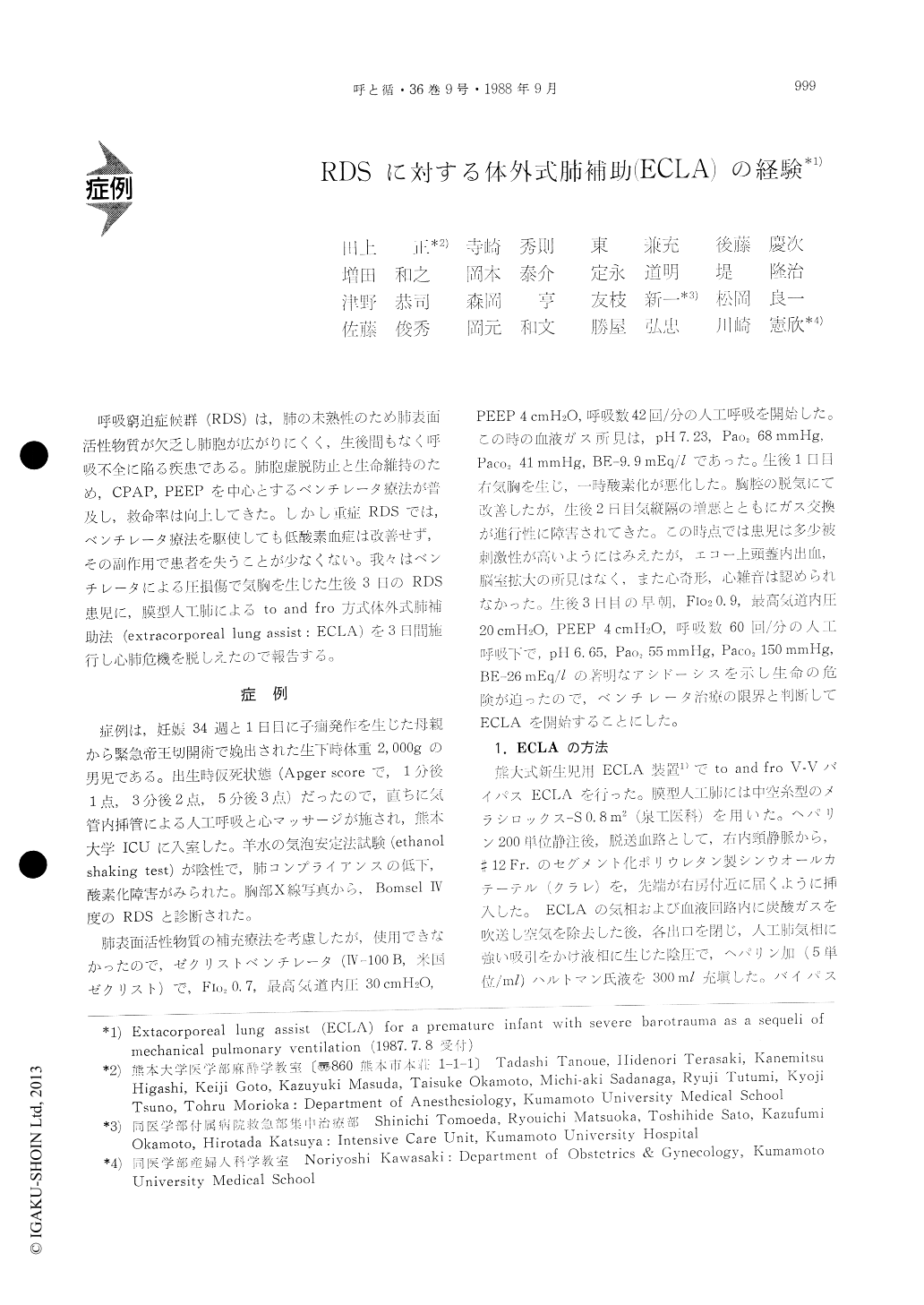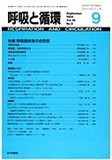Japanese
English
- 有料閲覧
- Abstract 文献概要
- 1ページ目 Look Inside
呼吸窮迫症候群(RDS)は,肺の未熟性のため肺表面活性物質が欠乏し肺胞が広がりにくく,生後間もなく呼吸不全に陥る疾患である。肺胞虚脱防止と生命維持のため,CPAP,PEEPを中心とするベンチレータ療法が普及し,救命率は向上してきた。しかし重症RDSでは,ベンチレータ療法を駆使しても低酸素「血症は改善せず,その副作用で患者を失うことが少なくない。我々はベンチレータによる圧損傷で気胸を生じた生後3日のRDS患児に,膜型人工肺によるto and fro方式体外式肺補助法(extracorporeal lung assist:ECLA)を3日間施行し心肺危機を脱しえたので報告する。
An infant with a body weight of 2000 g was delivered by Cesarean section at 34 weeks and one day of gestation from a mother with severe toxemia. Typical findings of RDS (Bomsel IV) were noted shortly after birth, and he was transferred to the Intensive Care Unit at Kumamoto University Hos-pital. During mechanical pulmonary ventilation for respiratory immaturity, the infant developed severe ventilation difficulties due to pneumothorax of the right chest and progressing mediastinal emphysema on the third day after birth.
For a life threatening PaO2 of 55 mmHg, a PaCO2 of 150 ininHg, and a pH 6.65 under maximal mechani-cal ventilation, venovenous extracorporeal lung assist (ECLA) with a hollow-fiber-oxygenator, Mera Silox, was performed through a single lumen cannula inserted into the right jugular vein. Under respira-tory support with ECLA, blood gases were main-tained within their normal limit, and mechanical ventilation could be turned down to the minimum to keep the lung at rest. Remarkable improvement of the lung pathology was noted within 24 hrs and ECLA was switched to the conventional ventilator therapy within four days. Though the patient died of neurological disorders as a sequence of intracra-nial hemorrhage 77 days after birth, ECLA once afforded this patient a chance to survive severe respiratory failure.
ECLA will become a new means of life support for the newborn and infants with severe cardiopul-monary failure.

Copyright © 1988, Igaku-Shoin Ltd. All rights reserved.


